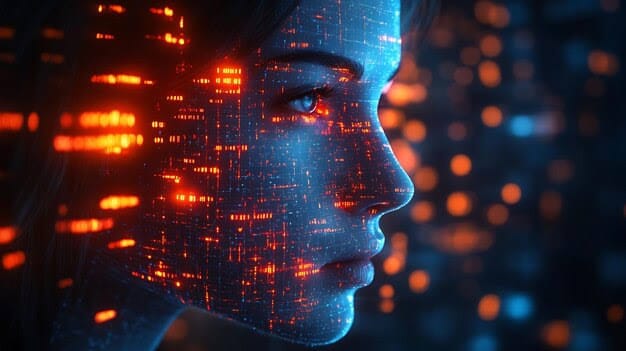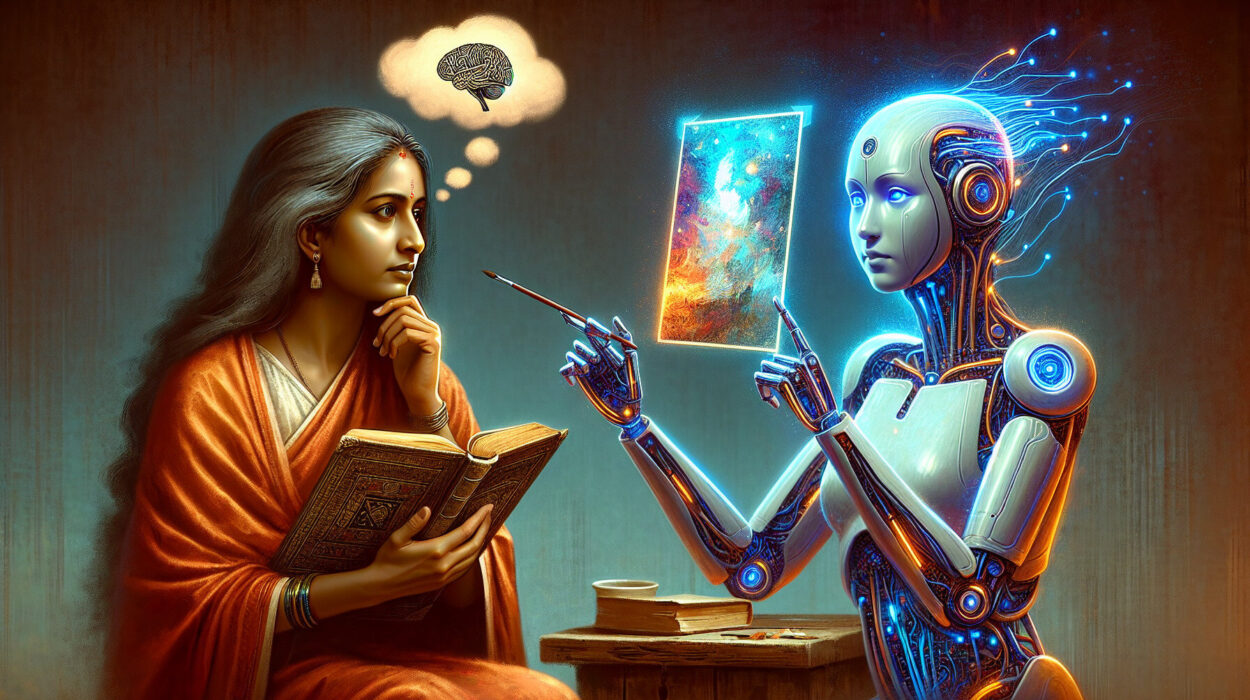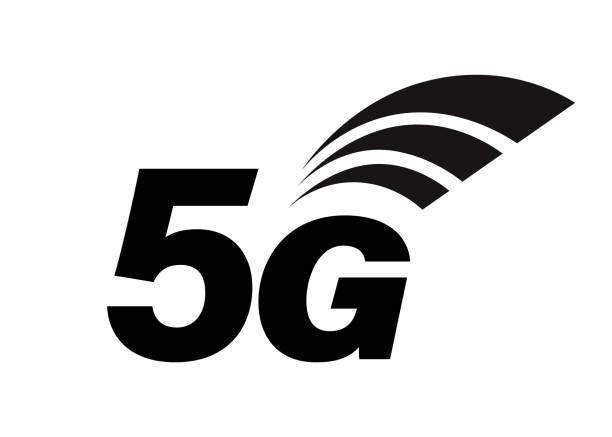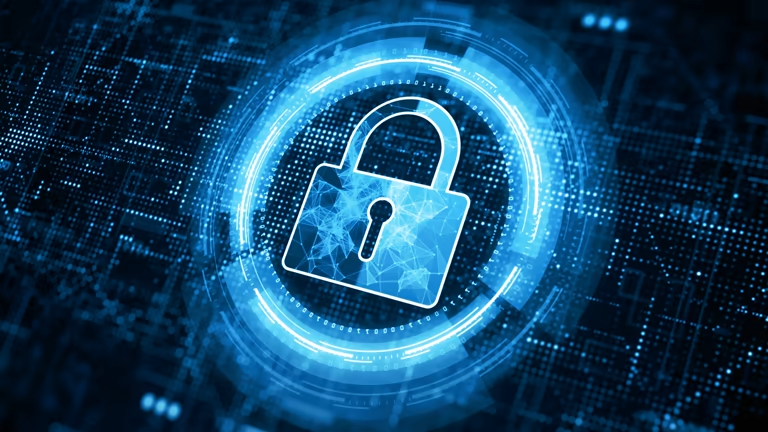In the early decades of the 21st century, our world quietly shifted onto a new battlefield — one without borders, without uniforms, and without the sounds of tanks rolling or planes overhead. Instead, the weapons are lines of code, the battlegrounds are invisible networks, and the soldiers are algorithms. Here, in this unseeable theater of conflict, the front line is your email inbox, your bank account, your hospital’s patient database, your country’s power grid. And among the defenders on this new front, Artificial Intelligence has emerged as both sword and shield.
Cybersecurity was once a relatively straightforward affair: build a wall high enough, a lock strong enough, a password obscure enough, and you could keep intruders out. But now, in a hyperconnected, cloud-driven world, attacks move too fast, evolve too unpredictably, and scale too massively for traditional defenses alone. AI, with its uncanny ability to learn, adapt, and predict, has become the guardian that never sleeps — but also, in the wrong hands, the predator that never blinks.
This guide is not merely about how AI is used in cybersecurity. It is about why it matters, how it changes the nature of defense and attack alike, and what it means for the very future of digital trust.
The Arms Race Between Hackers and Defenders
Every era of technology has had its shadow: the printing press brought both enlightenment and propaganda; the telephone connected people and con artists alike. The internet connected billions — and opened billions of potential vulnerabilities.
In the earliest days, cybercrime was often the work of lone enthusiasts: pranksters, “script kiddies” experimenting with pre-made viruses, or disgruntled employees looking to cause disruption. Today, it’s a multibillion-dollar industry. Well-funded cybercrime syndicates operate across continents. State-sponsored hackers wage digital espionage campaigns. Ransomware attacks shut down hospitals, city governments, and even fuel pipelines.
This escalation forced defenders to move from reactive strategies to proactive ones. Waiting for an attack to happen before responding was no longer viable — by the time human analysts detected the breach, the damage was often irreversible. And so the cybersecurity world turned to AI, asking it to think like an attacker, act like a guardian, and learn faster than the threat could mutate.
But the attackers learned too. AI is no longer just a defensive tool — it’s a weapon wielded by both sides.
How AI Sees the Digital World
To understand AI’s role in cybersecurity, you must first understand what it sees when it looks at the digital realm. For a human analyst, data comes in reports, graphs, logs. For AI, the world is an ocean of patterns — sequences of network packets, bursts of login attempts, keystroke timings, correlations between events that might seem unrelated to the human eye.
Machine learning models can digest millions of events per second, looking for anomalies: a login attempt from an unusual location, a spike in data transfers at 3 a.m., a subtle change in the way a user types their password. These anomalies, in isolation, might mean nothing. Together, they could be the first signs of an intrusion.
Where a traditional security system might trigger false alarms or overlook new attack vectors, AI thrives on the subtle and the new. It can identify a phishing email not because it contains a known malicious link, but because the writing style matches a known scammer’s previous work. It can flag malware not because it matches a known signature, but because its behavior in a sandboxed environment feels “off” compared to legitimate software.
In essence, AI in cybersecurity is like a hyper-vigilant detective, always building a mental map of “normal” so that even the faintest ripple in the digital fabric triggers suspicion.
Defensive AI: The Guardian That Learns
On the defensive side, AI’s capabilities are transformative. Consider intrusion detection systems: once, these relied on static rules — “if X, then alert.” Now, with AI, detection becomes fluid. The system learns what normal behavior looks like for each user, each device, each department in an organization. When something deviates from this baseline, AI doesn’t simply shout “Intruder!” — it analyzes the likelihood that it’s truly malicious, reducing false alarms while reacting faster to real threats.
In corporate environments, AI-powered endpoint protection platforms can quarantine suspicious files in milliseconds, automatically isolate compromised devices from the network, and even roll back files to a pre-attack state using stored snapshots.
The beauty of defensive AI lies in its adaptability. Cyber threats are not static — attackers constantly invent new techniques to evade detection. Where a human team might take days or weeks to identify and patch a vulnerability, AI can adjust its detection models within hours, sometimes minutes.
Offensive AI: The Threat That Thinks
Yet, as with any weapon, AI’s double edge cannot be ignored. Just as defenders use AI to detect threats, attackers use it to craft them. AI-powered phishing campaigns can now generate personalized emails that mimic a target’s writing style so convincingly that even cautious recipients are fooled. Deepfake audio can mimic a CEO’s voice to authorize fraudulent transfers. AI-driven malware can probe a network for weaknesses, adapting its tactics in real time to avoid detection.
Perhaps most chilling is AI’s potential for automated, large-scale attacks. Where a human hacker might target dozens or hundreds of systems at a time, AI can coordinate assaults on thousands, adjusting each one to the specific vulnerabilities of its target. The result is a cybercrime wave that can swell and strike far faster than any manual operation.
This is why cybersecurity today feels less like a fortress wall and more like an ever-shifting chess game — except the opponent’s pieces can change shape mid-match.
AI and Human Intelligence: A Necessary Alliance
The rise of AI in cybersecurity has not replaced human analysts. Instead, it has forced a redefinition of their roles. AI excels at speed, scale, and pattern recognition — but it lacks the nuanced judgment, creativity, and contextual awareness of a human mind.
When AI detects a potential breach, it can flag it instantly, but a human analyst decides whether it’s a false positive, a real threat, or something stranger still. Humans can interpret geopolitical context, understand the motives behind an attack, and anticipate future moves in ways AI cannot.
In the best operations centers, AI handles the heavy lifting — the endless sifting through logs, the instant blocking of known threats — while humans investigate complex cases, design new defenses, and think strategically. It’s a partnership: the tireless machine sentinel and the inventive human strategist working in tandem.
Privacy, Ethics, and the Dark Temptations
With AI’s power in cybersecurity comes a thorny web of ethical questions. To detect threats, AI often needs access to vast amounts of data: user behavior logs, communication patterns, file histories. This raises obvious privacy concerns. In the wrong hands, such surveillance tools could morph into instruments of oppression, monitoring not just malicious actors but political opponents, journalists, or everyday citizens.
There’s also the issue of bias in AI models. If the data used to train an AI security system reflects biased assumptions — for example, flagging certain locations or user behaviors as “high risk” without fair cause — the result can be unjust discrimination in access to services or unwarranted suspicion.
And then there’s the temptation to cross the line from defense to preemptive strike. If AI detects a likely attacker, should it be allowed to disable their systems before they commit a crime? International law is murky here, and the risk of escalation is high.
The power of AI in cybersecurity demands not only technical safeguards but moral discipline. Without it, the line between guardian and oppressor blurs too easily.
AI in Critical Infrastructure Defense
Some of the most urgent applications of AI in cybersecurity lie in defending critical infrastructure: power grids, water supplies, transportation networks, healthcare systems. These systems are tempting targets because a successful attack can cause widespread chaos and even loss of life.
AI’s predictive analytics can spot early signs of trouble — a small but unusual voltage fluctuation in a power station, a subtle change in water treatment chemical balances, an irregularity in hospital network traffic that hints at ransomware staging. In these contexts, speed is everything, and AI’s ability to act before a human could even finish reading a report is invaluable.
Governments are increasingly deploying AI-driven defense systems not only to respond to attacks but to run constant “red team” simulations — essentially AI attacking AI — to test vulnerabilities before real adversaries find them.
The Future: Quantum Threats and AI Countermeasures
The story of AI in cybersecurity is still being written, but the next chapter is already visible on the horizon: quantum computing. In theory, a sufficiently advanced quantum computer could break today’s encryption methods in minutes, rendering much of our current digital security obsolete.
Here, too, AI is expected to play a pivotal role. AI can help design quantum-resistant algorithms, simulate quantum attacks to test defenses, and even run hybrid systems that adapt security protocols in real time as threats evolve.
The stakes could not be higher. If AI in cybersecurity today is a race against human-led attacks, tomorrow it may be an arms race between AI-driven defense and AI-driven quantum assault.
A Human Future in a Machine-Guarded World
As we look ahead, it’s tempting to imagine a future where AI takes over entirely — where the network defends itself automatically, silently, without human intervention. But the truth is more complex. Machines may guard our digital walls, but the decisions about how those walls are built, what they protect, and what trade-offs we accept between security and freedom will always be human choices.
The ultimate role of AI in cybersecurity is not to replace us, but to amplify our ability to protect what matters — our privacy, our critical systems, our trust in the digital world. Like any powerful tool, it reflects the intentions of those who wield it.
And that is the paradox at the heart of this field: AI is both our greatest hope for securing the future and a new frontier of risk that we must secure in turn. It is the lock and the key, the armor and the arrow, the guardian and the potential invader.






